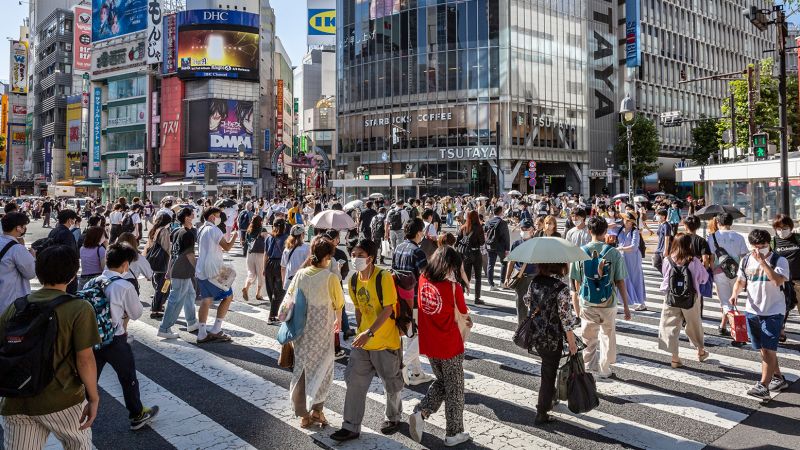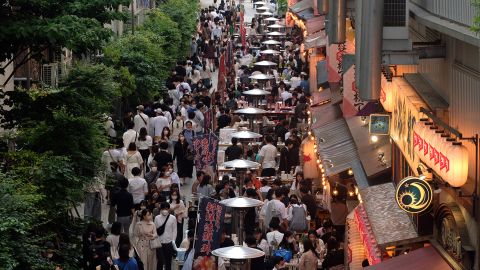
Japan: Tokyo is so crowded the government is paying families to leave
Tokyo
CNN
—
Japan is giving to pay family members to move out of its overcrowded cash, in an energy to revitalize countryside towns and raise the slipping beginning level.
Starting up in April, families in the Tokyo metropolitan place, together with people headed by solitary moms and dads, will be suitable to acquire 1 million yen ($7,700) for every kid if they shift to significantly less-populated parts throughout the place, according to a spokesperson from the central govt.
The incentives utilize to kids aged beneath 18, or dependents 18 and over if they are nevertheless attending substantial faculty.
It is not the initially time the government has tried out to use economical incentives to inspire folks to depart, but this plan is a lot more generous at three periods the amount of money at this time supplied.
For many years, men and women across Japan have migrated to its urban centers in search of task opportunities. Tokyo is the country’s most populous town, with about 37 million inhabitants.

Right before the Covid pandemic, the number of persons transferring into Tokyo outnumbered individuals leaving the metropolis by up to 80,000 every single year, according to govt data launched in 2021.
But this migration pattern, combined with Japan’s speedily aging population, has remaining rural towns with less and much less inhabitants, as effectively as millions of unoccupied houses. A lot more than 50 percent of the country’s municipalities, excluding Tokyo’s 23 wards, are expected to be designated as underpopulated parts in 2022, according to a national census.
Meanwhile, in main towns, house has swiftly run out and price ranges have skyrocketed. Tokyo is continuously a single of the world’s most high priced towns to stay in, rating fifth globally in 2022.
This difficulty, the migration of young persons from the countryside to crowded metropolitan areas, is a critical issue in Japan’s much larger demographic crisis, according to experts. The place has very long struggled with lower beginning premiums and lengthy life expectancy, and has seen the variety of fatalities outnumber births in the latest many years.
Specialists point to a number of variables: the higher value of living, constrained area and lack of childcare aid in cities make it difficult to elevate young children, meaning much less couples are owning little ones. Urban partners are also usually considerably from prolonged spouse and children who could enable supply aid.
For example, Tokyo has the least expensive fertility price of all 47 prefectures in Japan.
Recent migration designs are ensuing in deserted hometowns with several youngsters. In the riverside village of Nagoro in southern Japan, there were fewer than 30 people in 2019, with the youngest resident over the age of 50. The village’s only college shut down a handful of several years ago soon after its final college students graduated.
To battle these concerns, authorities launched an initiative in 2019 to bring in individuals to regional locations.
Underneath this approach, folks who have lived and labored in the Tokyo metropolitan location for at least five decades could acquire 600,000 yen ($4,500) if they moved to rural parts. That incentive is larger for partners, at 1 million yen ($7,700).
Final 12 months, the govt allowed one dad and mom or couples with little ones to obtain 300,000 yen ($2,300) for every child if they relocated.
People who relocate could do the job in that space, established up their personal business or retain performing remotely at their Tokyo-primarily based work opportunities, explained the federal government spokesperson.
“Tokyo has a quite large focus of people, and the authorities wishes to enhance the flow of people today to the regional locations to revitalize places with declining populations,” he included.
There is some proof the software is getting traction, while numbers are however small. In the 1st 12 months of start, only 71 homes participated, in comparison to 1,184 homes in 2021.
Japan’s govt has also made other efforts to deal with the populace decrease, which include introducing guidelines in the past few decades to increase boy or girl care expert services and boost housing facilities for families with youngsters. Some rural cities have even started paying couples who are living there to have youngsters.
